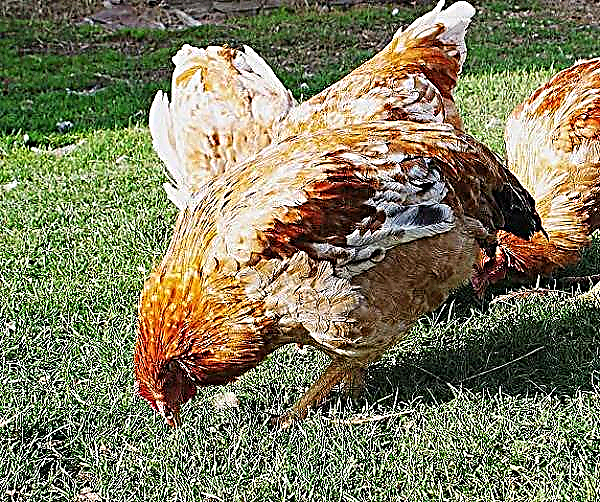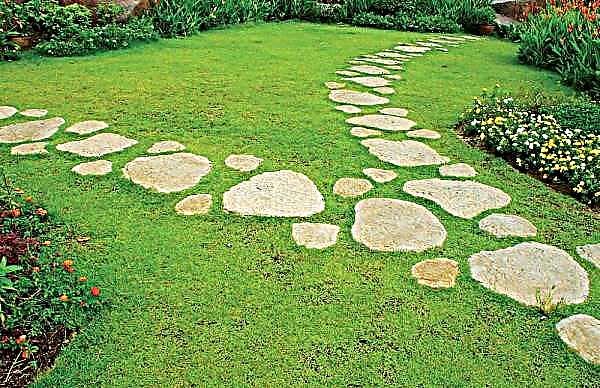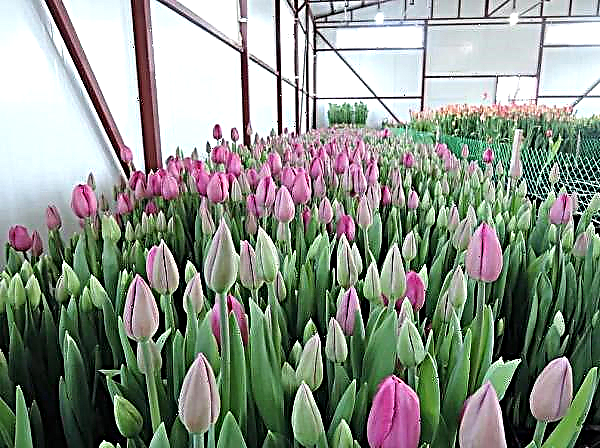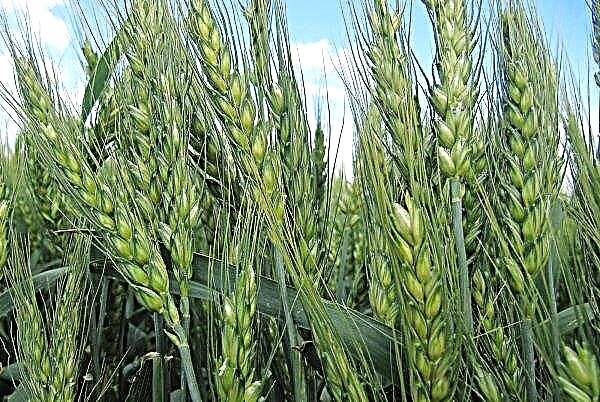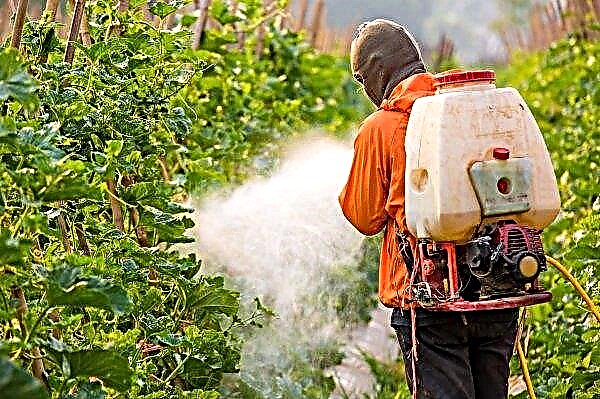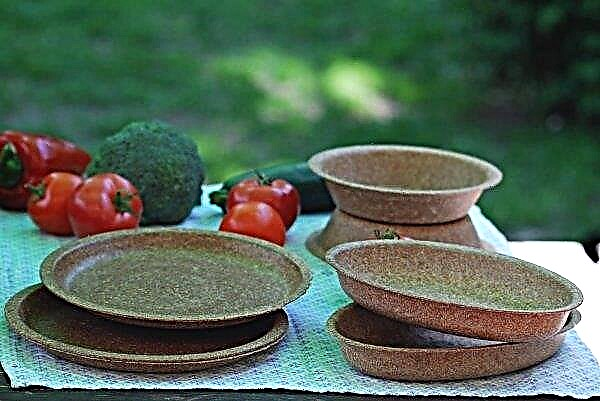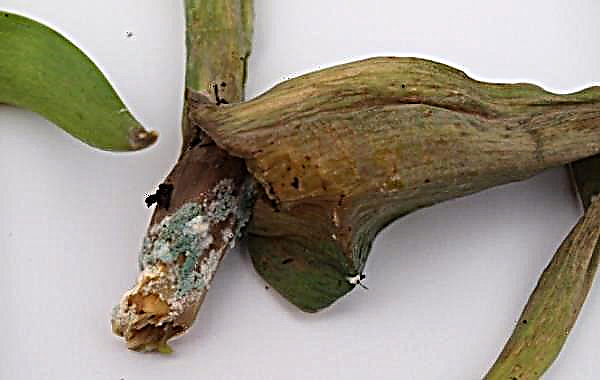A rare landscape design does without hedges, picturesque thickets along the walls of the house or fence. Very often, flowering perennials are used in such compositions, they include different varieties of climbing roses. One of the most popular species is the Sympathy rose, the cultivation features of which will be discussed below.
Botanical description of the plant
The climbing rose Sympathy refers to perennial flowering plants, is a tall, branched, weaving shrub with dark green, smooth leaves of a small size, elongated shape. The height of the bush is usually 2.5–4 m. Sympathy blooms profusely and for a long time, the flowering period begins in mid-June, and ends in mid-October. The inflorescences are large, about 10 cm in diameter, bright red in color, consist of terry petals (usually in a bud of 19-20 petals), which have a pronounced sweet-spicy aroma. On one stem, 3 to 10 flowers can be located. The root system is developed, the length of the roots can reach 2 m.
How to choose seedlings when buying
To choose the right seedlings for your garden, you need to know what to look for when buying:
- it is advisable to purchase seedlings in specialized stores or nurseries, rosaries;
- seedlings should be selected zoned, that is, obtained in the region in which the cultivation is planned, since they do not need acclimatization;
- when choosing, it is better to give preference to grafted 2-3-year-old seedlings, since their root system is more resistant to frost;
- when buying planting material with an open root system, you need to evaluate its development, check the integrity of the roots, the absence of signs of decay;
- Rose seedlings sold in containers are convenient in that they can not be transplanted immediately. It is important to remember that high-quality seedlings in pots should have several powerful, woody stems.
Did you know? The oldest rose bush discovered in Germany. It grows in the city of Hildesheim, next to the wall of St. Michael's Cathedral, a plant about 1000 years old.
Outdoor landing
The proper organization of the process of planting roses Sympathy on the site is the basis for the successful cultivation of a large and beautiful shrub.
The timing
Any roses, regardless of variety, are planted in open ground twice a year: in spring or autumn. Autumn planting is done before the start of frost, usually in the second half of September, in warmer areas, seedlings can be planted in early October. Plants converted to soil in the fall will begin to bloom in the coming summer. In spring, climbing roses are planted after the end of the cold, when stable warm weather is established, and the soil warms up to + 15 ° C, in most regions the period from late April to late May is considered the most suitable time.
Seat selection
In order for the shrub to grow and develop well, it is important to choose the right place for its placement. Rosa Sympathy loves well-lit places, protected from drafts. Sites facing east or south are ideal. The plant is demanding on the soil: it must be fertile, loose, breathable. Clay soil is too heavy and retains water, which can harm the root system of the bush, while sandy soil, on the contrary, is too unstable and soft. Ideally grow roses on loam.
Did you know? There is a genetic paradox: if you mix varieties of roses that have a bright and strong aroma, then the resulting hybrid will either not have a smell at all, or it will smell subtle.
Preparatory work
Planting young rose bushes Sympathy should begin with careful preparation of the site and the seedlings themselves.
Soil preparation
The selected area must be cleaned of weeds, they have a very negative effect on the condition and flowering of roses, then dug up to make the soil more loose and soft. A small amount of humus can be added to the topsoil to increase fertility. It is known that rose bushes cannot tolerate waterlogging, so you need to take care of the drainage system in advance: the place where the plant will be located should be with a slight slope, and in the prepared holes, it is necessary to pour a layer of expanded clay or small pebbles.
It is known that rose bushes cannot tolerate waterlogging, so you need to take care of the drainage system in advance: the place where the plant will be located should be with a slight slope, and in the prepared holes, it is necessary to pour a layer of expanded clay or small pebbles.
The day before planting, mineral fertilizers are applied to the soil to reduce soil acidity and make up for the lack of trace elements. It is easiest to use ready-made fertilizers of industrial production (for example, Nitrofoska), according to the instructions.
Important! If the soil of the site is clay, then it can be lightened by pouring a layer of sand to a depth of 50–70 cm, similarly sandy soil is strengthened by applying a layer of clay.
Seedlings preparation
Before planting in the soil, seedlings need to be examined, dry or damaged roots removed, it is also recommended to shorten long shoots so that 4-6 buds remain on each. The selected seedlings are soaked for a day in water or a solution of sodium humate (plant growth stimulator), according to the manufacturer's instructions.
Scheme and Depth
Pits for planting future shrubs are prepared standard, with a depth and diameter of 50 cm, the bottom of the recess is loosened so that a slight elevation is formed. The seedling is placed in the hole, distributing the roots along the edges of the elevation so that they are at a slight angle to the surface of the earth. The root system should be at a depth of at least 12 cm, which will protect it from frost.
As soon as the seedlings are planted, they fill the hole with earth, trying not to leave voids, tamp the top layer, after which a shallow furrow for irrigation is broken around the hole. Immediately after the planting of young plants, the earth must be thoroughly watered, water is poured into the furrow in several stages, waiting for complete absorption. Some gardeners use a different method of planting roses: the so-called wet. It differs from the previous one in that before placing a seedling in a hole, a bucket of water is poured there. Obviously, when using this method, additional watering at the end is not required.
Care Tips
It’s not too difficult to take care of the rose bushes, however, there are features on which the success of growing this plant depends.
Watering
Climbing roses are drought tolerant, therefore they are usually watered once every 7–10 days sparingly (an average of 1–1.5 buckets per bush). A shallow moat is made around the bush, which does not allow water to flow. Watering is carried out according to the traditional scheme, under the root, trying to pour water in a small stream so as not to erode the soil. To keep moisture better, the soil around the bush is mulched with sawdust or hay.
Important! Climbing shrubs should be planted no less than 50–80 cm from the wall of the house or fence.
Top dressing
Roses need to be fed regularly, but this should be done strictly according to the season, since an excess of fertilizers can adversely affect the condition of the plant. The first fertilizers are added to the hole when planting seedlings (manure and peat are used), such a supply of nutrients is enough and within 2 years after transplanting, the bush does not need additional fertilizing.
Starting from the third year of life, Sympathy roses are fertilized according to the following scheme:
- in early spring, before the onset of the growing season, nitrogen fertilizers are applied (for example, ammonium nitrate at a concentration of 30 g / m², after 14 days they are re-fed;
- with the beginning of the growing season and the intensification of the formation of buds, the plant is fed a complex mineral fertilizer (for example, “Activin” for flowering plants and roses or “Crystal”);
- before flowering, the rose is fertilized with a solution of sodium humate, prepared according to the instructions on the package;
- at the end of the flowering period, in September-October, nitrogen-based fertilizers are removed and fertilized with a potassium-phosphorus complex, which stimulates the growth of roots and shoots, and also strengthens the plant's immunity (25 g of superphosphate and 10 g of potassium sulfate are dissolved in 10 l of water )

Weeding and loosening of soil
Climbing shrubs do not tolerate well-groomed soil overgrown with weeds, this factor can adversely affect the growth and development of the plant, and especially its flowering. Weed grass must be weeded regularly as it appears on the site, without waiting until it grows to its full potential. Large weeds are uprooted, small shoots can be carefully removed by walking along the top layer of soil with a garden hoe.
Loosening of the earth around the base of the bush is necessary to ensure good aeration of the soil and redistribute trace elements and nutrients. Loosen the soil 2-3 days after the next watering, when it dries a little. For this purpose, use a small rake with teeth 5-6 cm long.
Pruning
Rosa Sympathy is a perennial plant, and, of course, periodically requires pruning.
Traditionally, it is carried out in spring and autumn, these two procedures have different goals:
- Autumn is produced after flowering, closer to the end of September, but before the onset of night frost. Its purpose is to clean the bush from old, damaged stems and shoots before wintering. So, usually select 10–13 of the strongest branches to be saved, the rest cut off;

- spring pruning is aimed at removing shoots that have died out after winter, broken branches, as well as young shoots that appeared in the lower part of the bush under the grafting site. Wild shoots should not be cut off with pruners, but cut off manually. It is important to carry out spring pruning in the period before the start of the growing season, but only after the end of night frosts.

Support
Climbing roses were originally intended for decorating fences, walls of houses, arbors, arches. As a support for the bush, you can use almost any suitable structure on which you can attach curly stems. In landscape design, arches, pergolas and fences are most often used as a support. Light metal lattice structures with transverse crossbars spaced 40 cm apart are best suited. You need to place the flower stems horizontally and let them drop slightly to stimulate young shoots to grow up. The branches of the bush must be fixed to the support with the help of small pieces of wire or special plastic ties for the vines.
Shelter for the winter
Roses must be covered for the winter, despite the fact that their root system provides a fairly strong resistance to cold. It is especially important to provide heat to shrubs that are grown in the middle lane. In the southern regions, the branches are not removed from the support and covered with lapnik directly on the structure, attaching it to the crossbars.
In colder edges, roses need a thorough warming. In warm and dry weather, the branches of the plant are carefully removed from the supporting structure and pruned unnecessary or damaged stems. The remaining branches are tied together and laid on the ground, fixing them in this position. Top stalks sprinkled with dry foliage or spruce branches and covered with a film.
So, having become acquainted with the climbing rose of the Sympathy variety and having studied the features of its cultivation, it can be noted that this perennial plant is moderately capricious in care and has high resistance to environmental conditions. In addition, the incredible beauty of the buds and the abundant, long flowering make this shrub an ideal decoration of the garden.



